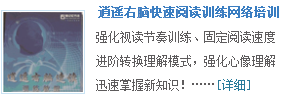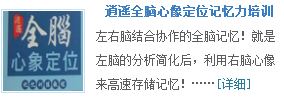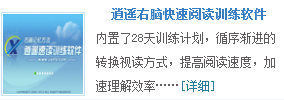【摘要】高一高二的同学忙着准备期中考试的时候,高三的同学们正在进行紧张的高考前地理论复习,下面是准备的“高三英语第一轮复习:英语阅读理解解题方法”欢迎大家点击参考!
很多学生对英语阅读很头痛,总认为自己有阅读障碍症,说阅读的文章貌似看懂了,但做题目却做不对;还有些学生说文章很凌乱,生词多,不知道作者在说什么,一头雾水。这些学生可能其他方面很优秀,比如说语法很精通,笔头翻译也比较干净等,但阅读成了他们心中的痛。
我在学生时代也有这样的困惑,即便到了大学,表达很流利,但阅读仍然是我的弱项。每每上泛读课时,老师发给我的阅读试卷我的正确率只有75%左右。作了老师之后,因为要帮助学生分析阅读,所以我在阅读上会花很多时间。一篇文章要看至少三四遍,才敢自信地走上讲台跟学生娓娓道来文章的主旨、结构、写作目的以及核心细节。慢慢地,我的阅读障碍消除了,做阅读的速度加快了,对于选择的正确性有了自信。所以,我觉得,做老师的不必过分苛责学生阅读能力差,阅读的提高需要时间。学生和老师不同,不可能花那么多时间研究英语阅读。
不过,今天我还是要作为一个克服障碍的learner在这里,跟大家交流一点点小的心得和学习方法。
首先,要养成理清文章脉络的习惯。在阅读时,要用比划出每一段当中的主题句、(一般出现在段首或段尾)核心句(比如转折部分的句子,过渡句)和出现频率较高的词。这些字句连在一起可能会帮你对文章的理解有个整体的把握。其次,要注意标点符号如破折号、冒号的用法,往往他们是对核心概念的界定和解释说明。第三,先看问题可能会帮助你理解文章,让你了解这篇文章到底要你掌握哪些核心内容。
至于阅读理解当中的各种题型的解题方法,我做如下的建议:
一、细节理解题
1.事实细节题的设问特点
(1)常以 when,where,what,which,who,how much/many 等词提问。
(2)以是非 true/false,not true/false 等词提问。
2.正确选项的特点
正确选项一般都会在原文基础上进行改造。常用方法就是同义词替换或释义,即把文中语言(词汇和结构)改头换面,来表达相同的意思。
[例] "Poor but honest.” "The deserving ( 值得帮助的) poor.” These words always come to my mind when I think of "the poor.” But I also think of people who, perhaps through alcohol (酒) or drugs, have ruined not only their own lives but also the lives of others in order to give way to their own pleasure. Perhaps alcoholism and drug addiction (上瘾) really are "diseases,” as many people say, but my own feeling-based, of course, not on any serious study-is that most alcoholics and drug addicts belong to the "undeserving poor.” And that is largely why I don’t give spare change to beggars.
64. What does the author think of beggars who take drugs?
A. They should be given a check-up.
B. They really need money to live.
C. They have no pleasure in life.
D. They are not worth helping.
此题答案是D.命题人在这里用 They are not worth helping 来替换了文中的 undeserving poor,表达了相同的意思。
3.干扰选项的特点
(1)无中生有:凭空捏造原文不存在的细节,以迷惑和干扰答题。
[例] Many years ago,when I was fresh out of school and working in Denver,I was driving to my parents’ home in Missouri for Christmas. I stopped at a gas station(加油站)about 50 miles from Oklahoma City,where I was planning to stop and visit a friend. While I was standing in line at the cash register(收款台)I said hello to an older couple who were also paying for gas. I took off,but had gone only a few miles when black smoke poured
from the back of my car. I stopped and wondered what I should do. A car pulled up behind me. It was the couple I had spoken to at the gas station. They said
they would take me to my friend’s. We chatted on the way into the city,and when I got out of the car,the husband gave me his business card.
62. What happened when the author found smoke coming out of his car?
A. He had it pulled back to the gas station.
B. The couple sent him a business card.
C. The couple offered to help him.
D. He called his friend for help.
根据文中意思,此题答案是C.选项A、D都是凭空捏造原文不存在的细节,作为干扰项,虽然有B这一细节,但是这一动作发生的时间与题干不符,动词sent 用得也不对。
(2)常识干扰:干扰项是一些基本常识和我们对社会、生活等方面一些问题的一般看法和认识,虽然符合客观现实,但并非文章所提及的。
[例] Budgets are not complex, but sticking to them can be tough. When planning your budget be realistic about your expenses. If you know that you drop $18 at a movie, don’t write $12 in that space simply because you wish you were spending less. If you are eyeing a big purchase, such as a $150 skateboard, spend less and save more until you have the total amount. No matter how attractive it may be, avoid spending your savings. One day, you will thank yourself!
58. what should people do when planning a budget?
A. fill in the expenses as they really are.
B. avoid spending money on expensive things.
C. set aside a fixed amount of money as savings.
D. list income and expenses on two pieces of paper.
根据文中意思,此题答案是A.但是选项B、C都看似符合常识——要做好花销预算,尽量避免买太贵的东西;每月固定留出一笔钱存上。这些选项的说法符合我们的一般认识。如果考生此时粗心,就容易使得干扰项想入为主,而忽略了要从原文验证,从而导致了错误的判断。
(3)偷梁换柱:这是细节题干扰项最常见的方法。干扰项利用了原文的一部分结构和词汇,但在一些位置换掉个别词,造成了语义的变化。
[例]Cara Lang is 13. She lives in Boston, Massachusetts, U. S. Last Thursday, she didn‘t go to school. She went to work with her father instead. Every year, on the
fourth Thursday in April, millions of young girls go work. This is Take Our Daughters to Work Day. The girls are between the ages of 9 and 15. They spend the day at work with an adult, usually a mother, father, aunt, or uncle. They go to offices, police stations, laboratories, and other places where their parents or other family members work. Next year, the day will include sons, too.
66. According to the passage, Take our Daughters to work Day is ______.
A. on every Thursday in April B. a holiday for girls of all ages
C. a day for girls to know about jobs D. a day for girls to get a job easily
此题答案为C.但考生极容易错选A,原因是考生没有看到该选项已经把the fourth Thursday in April换成了every Thursday in April.因此,要特别留意选项各个句子成分是否与原文表述的意义一致,包括地点、时间、方式、程度、性质等。
4.解题思路
(1)返回原文,每一个选项都应力争返回原文,不能通过印象进行判断。
首先要找出文中哪一部分与其相关,同时要在文中找出一个词、一个句子、甚至是一组句子来直接或间接证实自己的选择。切不可用于文章无关的细节来作为证据。
(2)对于比较直接的细节题,有时不必通篇细看原文,只需采取“带着问题找答案”的方法,先从问题中抓住关键性词语,然后以此为线索,要快速地辨认和记忆事实或细节。
特别提示 : 细节题中,选项在意思上与原文相同的,才是正确的,而不一定是与原文一字不差的。
总结:上面的“高三英语第一轮复习:英语阅读理解解题方法”供大家参考,希望网的高考第一轮备考可以给高三的同学们提供最优秀最有效的复习策略,感谢您参考!
更多精彩内容推荐:
本文来自:逍遥右脑记忆 http://www.jiyifa.com/gaosan/215245.html
相关阅读:2014高考一轮复习:文言文特殊句式总结



